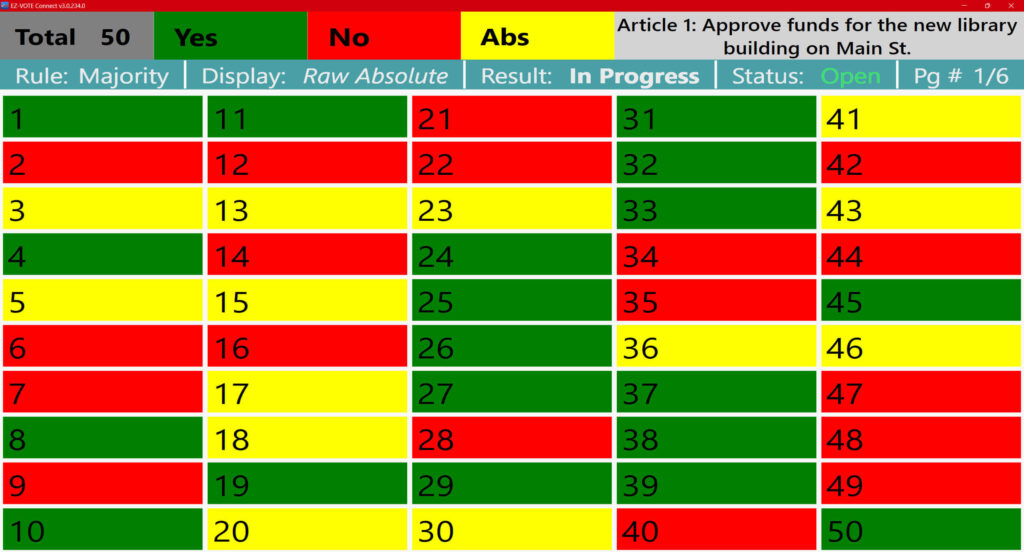What are Offline, Short-Range, RF Electronic Voting Systems?
Offline, Short-Range, RF Electronic Voting Systems are comprised of desktop software, handheld voting devices, and a short-range, Radio Frequency (RF) receiver.
They are typically used to replace hand, voice, or paper voting. They are commonly used by corporate or municipal boards, councils, and associations. They continue to grow in popularity because of their simplicity, low cost, and security.
Are Short-Range RF Voting Systems Secure?
Yes. Absolutely.
Short-Range RF Voting Systems are secure because they are designed to operate without the need for internet connectivity.
They also limit the communication radius of the voting devices to a small distance, typically the size of the voting area or room they operate in.
Internet Based Attacks
99.99% Secure
Attacks Outside Short-Range RF Voting System
99.99% Secure
Attacks Inside Short-Range RF Voting System
Locked


What About Local Security Within the RF Range?
Short-Range RF Voting Systems are secured by a combination of physical security of the voting area and the security layers of the RF signal itself, which are regulated by industry standards.
All Offline Short-Range RF Voting Systems are secure, but the level of security will vary based on how well the area is safeguarded and how many layers of protection surround the RF signal.
The security of your voting area is of the utmost importance because if the area itself is secure, no internal threats can affect you.
For example, a voting system operating in a concrete building, which requires key card access and is staffed by law enforcement personnel is more secure than an open field with public access.
All electronic systems, even the most sophisticated ones on Earth, can be broken into with enough time, money, and skill. To ensure your system has the highest level of protection, take steps to secure the voting environment and visually confirm your votes.
To ensure your voting system is protected:
-
Secure your dedicated voting computer
-
Monitor the connection to your base receiver
-
Block off the area where the voting equipment is located
-
Ensure security of keypad registration, distribution, and collection
-
Control access (entry) to your voting area
-
Use a voting software with visual vote confirmation
-
Watch out for suspicious devices in and around your voting area
-
Beware of individuals who may be trying to influence the vote


Visually Confirm Each and Every Vote
One of the safest ways to vote is to use a Visual Vote Confirmation display – or Voting Grid.
Even if you suspect that a bad actor is in your midst, you can instill confidence in your voting process by showing everyone how they voted.
You can configure the Voting Grid display to show names, or keep it anonymous, but most importantly, you and the voting audience can review the votes before they are final, confirming that none of them have been affected by malicious activity.
Learn more about Visual Vote Confirmation here.

